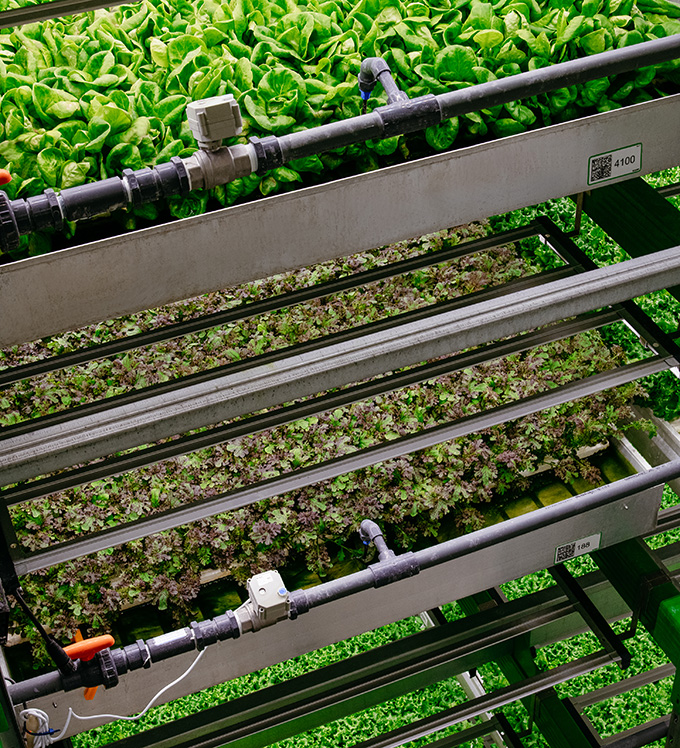Artificial intelligence (AI) has been a part of our lives for longer than many of us realize
Artificial intelligence (AI) has been a part of our lives for longer than many of us realize. If you’ve asked Siri a question, told Alexa to turn off the lights, or had a movie recommended to you by Netflix, you’ve experienced artificial intelligence in action. While applications like autonomous driving get most of the headlines around AI, this technology has become essential to the fabric of our digital lives.
At Bowery, AI is one of the critical tools helping us scale up our solutions for global problems such as food insecurity and resource-inefficient agriculture.
What is artificial intelligence?
AI is commonly defined as a machine’s ability to perform cognitive functions we associate with human minds, such as perceiving, reasoning, learning, interacting with the environment, problem solving, and even exercising creativity. Some of the emerging technologies that enable AI to solve agricultural problems include robotics, computer vision, and machine learning.
How can AI facilitate more sustainable farming?
From agricultural robotics to soil and crop monitoring to predictive analytics, AI is becoming an integral part in the agriculture industry’s fight to feed the future sustainably in the face of climate change. Companies like Blue River Technology are enabling farmers in the field to optimize their agriculture processes of planting and herbicide usage thanks to computer vision. Trace Genomics is helping farmers detect early signs of disease in crops.
And while these are just a few examples of emerging technologies that unlock smarter farming, the agricultural industry as a whole is tapping into AI to address the larger issues at hand, including the overconsumption of freshwater resources, overuse of pesticides, biodiversity loss, and fragmented supply chains.
How do Bowery’s indoor vertical farms use AI?
At Bowery, our farmers grow indoors, which provides us sustainable and scalable advantages. However, with thousands of crops growing at the same time—each with its own set of environmental preferences—our farms present a complicated decision-making challenge. This is where AI steps in: to help us constantly improve how we grow.
The BoweryOS serves as the central nervous system at each Bowery farm, offering plants individualized attention at scale. It works by collecting billions of data points through an extensive network of sensors and cameras that feed into proprietary machine-learning algorithms that are interpreted by the BoweryOS in real time.
This essentially means that the BoweryOS can simultaneously identify an unhappy arugula plant that needs more light while also alerting our modern farmers to several trays of baby butter lettuce that need to be harvested tomorrow. It gets smarter with each grow cycle, gaining a deeper understanding about the conditions each crop truly needs to thrive.

Computer vision identifies crop health issues on a tray of arugula.
BoweryOS, unlocking the right “crop recipe”
Let’s break down that last point. At Bowery, we refer to the environmental conditions that plants need to flourish as “crop recipes.” Traditionally, a farmer’s recipe would involve ingredients such as seeds, fertilizer, harvest season, and geographic location of the farm itself.
Indoors, without typical outdoor weather conditions, we can include an entirely new set of granular factors: spectra of light, photoperiod (day/night cycles), intensity of light, irrigation schedules, nutrients, airflow, temperature, humidity, and CO2. Our farmers control these variables and can adjust them hour by hour (or even minute by minute) to optimize for plant health and, ultimately, flavor.
So, how do we know what the best “recipe” is for a crop to thrive? Machine-learning algorithms are constantly searching for this answer. The BoweryOS benefits from historical data gathered from thousands of growth cycles for each crop grown at a Bowery farm, and continuously tweaks growing conditions to further hone in on the most effective environment. The “recipes” with the highest rates of success (i.e., the healthiest plants and crop yields) are further refined and then scaled automatically throughout our farms.

Example of the various recipes being tested for one crop over time.
This method of using AI allows Bowery farmers to test, iterate, and scale scientific exploration at a pace not previously achievable in agriculture. Our ability to learn—and scale that learning—is tied to the number of farms we have and, subsequently, the amount of data we collect, rather than the size of our R&D team.
AI Unlocks Efficiency and Scale
As AI improves the recipe for each crop, it’s also working to make our entire operation smarter. It works with our AgTech systems to ensure purified water is being used efficiently throughout the farm. AI also helps manage our energy consumption—an area of continuous improvement at Bowery and a ripe opportunity to become more sustainable.
AI is often an unknown and misunderstood subject, but it is important to raise awareness for all the good it is bringing to the world, and to the agriculture industry. From helping an indoor farm uncover a more sustainable crop recipe, to assisting in early crop disease detection, it’s making humans smarter than ever before while helping us inch toward a happier planet with a system of agriculture that can feed a growing population.




